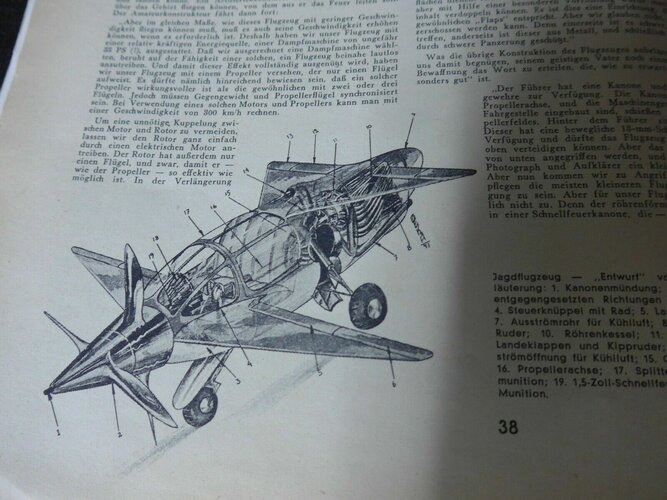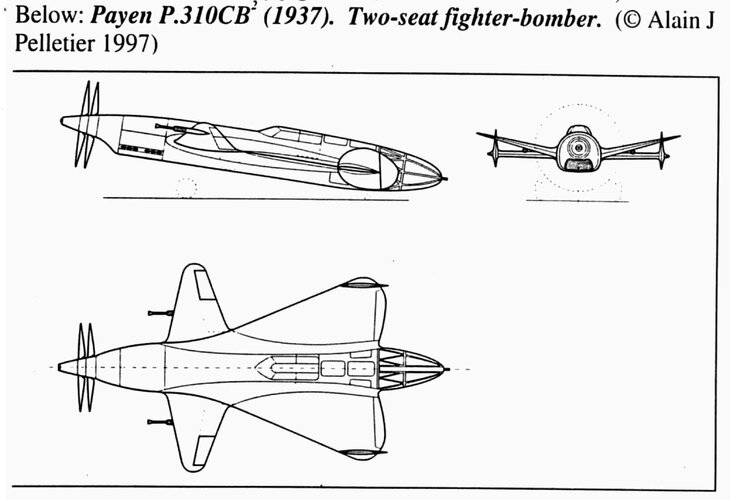Deltafan
ACCESS: Top Secret
- Joined
- 8 May 2006
- Messages
- 1,697
- Reaction score
- 2,316
On the airwar.ru websites some photos of the Payen's AP.10 and Pa.22. A few of them are unknown on Secretprojects :
On the airwar.ru websites some photos of the Payen's AP.10 and Pa.22. A few of them are unknown on Secretprojects :
Sorry Hesham, I don't understand your question about this Pa.120On the airwar.ru websites some photos of the Payen's AP.10 and Pa.22. A few of them are unknown on Secretprojects :
My dear Deltafan,
Such as PA-120 ?.
Does anyone know how these engines were supposed to work?
I have in my archives a discussion dating from December 2007 on the French forum Aérostories. French aviation writer Philippe Ricco replies to Christian Bonnet (I think he was a restorer of old planes):Does anyone know how these engines were supposed to work?
-Bonnet : It is possible that no development followed, due to poor performance due to low compression ratio. In order to counter this inconvenience, Melot made a device with a free piston engine (hey, it reminds me of Pescara), compressed air was needed at start-up. Ernest Morize seems to have studied a similar system.
-Ricco : No, it was not because of a performance problem, but rather the autonomy of the device. I had discussed it in particular with Philippe Poisson-Quinton, who had been responsible for studying this device, before participating, after the war, in the creation of ONERA. He had been very pleasantly surprised by the results obtained.
The trouble is that this trump thruster system is a flow accelerator, just like a ramjet. Alas, it needs a complement to initiate the phenomenon and obtain the thrust. We also find the same principle described in certain studies by Henri Coanda.
Thanks a lot Hesham ! Great find !



AFAIK, no. I never seen such a design from Payen. A 33 hp steam engine is also not one of the known engines of the payen projects. Moreover the readable signature (BEKA / 41 ?) is not that of Roland Payen either.Is it a Payen design?
found here : https://www.ebay.de/itm/203488489880?hash=item2f60dbf198:g:ZB8AAOSwfLJgwM~G
Well, since this post from Stargazer 8 years ago, and the RP.420 3 views, we got, a drawing from Jemiba and, some days ago, another drawing from CiTrus90.A few Payen projects from an old issue of Le Trait d'Union:
- Payen RP.420 fighter (K28B)
My dear Richard,Is it a Payen design?
View attachment 658700
found here : https://www.ebay.de/itm/203488489880?hash=item2f60dbf198:g:ZB8AAOSwfLJgwM~G
Wow!Well, since this post from Stargazer 8 years ago, and the RP.420 3 views, we got, a drawing from Jemiba and, some days ago, another drawing from CiTrus90.A few Payen projects from an old issue of Le Trait d'Union:
- Payen RP.420 fighter (K28B)
I send the drawing of CiTrus90 to the Musée Delta (created by Roland Payen and today's French home of the history of Payen and delta aircraft) and, maybe for the first time since 20 years, they answered... And they even send me an unknown original drawing of Roland Payen on the RP.420. What is wrote on it is :
PR n°1 (maybe PR = project)
September 1935 (I cannot read the day, between 10 and 19, maybe 18)
Fighter plane
NR Payen (NR=Nicolas Roland)
Engine Gnome et Rhone 14 Kdrs
All-metal magnesium construction
Retractable landing gear
2 counter-rotating propellers
with 4 machine guns
Single-seater fighter
Maybe the 3 views drawing (Jean Molveau, 1993, in Le trait d'union) was a later project (2 ?) with only two machine guns located outside the propellers field.
All metal construction with magnesium and the GR 14 Kdrs engine were unknown for the RP.420. According to the book Les moteurs à pistons aéronautiques français 1900-1960 (Robert J. Roux, Docavia/Larivière, 1987) the power of the 14 Kdrs engine (1933) was 750 hp.
Maybe. At least, we can tryWow!Well, since this post from Stargazer 8 years ago, and the RP.420 3 views, we got, a drawing from Jemiba and, some days ago, another drawing from CiTrus90.A few Payen projects from an old issue of Le Trait d'Union:
- Payen RP.420 fighter (K28B)
I send the drawing of CiTrus90 to the Musée Delta (created by Roland Payen and today's French home of the history of Payen and delta aircraft) and, maybe for the first time since 20 years, they answered... And they even send me an unknown original drawing of Roland Payen on the RP.420. What is wrote on it is :
PR n°1 (maybe PR = project)
September 1935 (I cannot read the day, between 10 and 19, maybe 18)
Fighter plane
NR Payen (NR=Nicolas Roland)
Engine Gnome et Rhone 14 Kdrs
All-metal magnesium construction
Retractable landing gear
2 counter-rotating propellers
with 4 machine guns
Single-seater fighter
Maybe the 3 views drawing (Jean Molveau, 1993, in Le trait d'union) was a later project (2 ?) with only two machine guns located outside the propellers field.
All metal construction with magnesium and the GR 14 Kdrs engine were unknown for the RP.420. According to the book Les moteurs à pistons aéronautiques français 1900-1960 (Robert J. Roux, Docavia/Larivière, 1987) the power of the 14 Kdrs engine (1933) was 750 hp.
Glad I could be of help and thank you very much for sharing what the museum sent you.
Maybe we should make more drawings and email them, and they will send us back some other original drawings and info??
Hi !Hi everybody,
Help wanted !
The link of the November 1934 italian video of the Payen Pa.101 is dead
Enjoy !!!!!!!!!! ;D
Embedded media from this media site is no longer available
I could not find it again on the WWW
If anyone can find it again, he will be the best forumer of the Universe

 en.wikipedia.org
en.wikipedia.org
An idea of what the Pa.300 could have looked like ?Payen offered to build the Pa 300 instead, a fighter capable to surpass the 520 kph of the Programme Technique A23 if they provided him with an H.S.12 Y-45 engine. But the military, who had done most of his career flying in biplanes, found the flèche aerodynamic solution to be too radical and preferred to build the Arsenal VG 33.
NoAn idea of what the Pa.300 could have looked like ?Payen offered to build the Pa 300 instead, a fighter capable to surpass the 520 kph of the Programme Technique A23 if they provided him with an H.S.12 Y-45 engine. But the military, who had done most of his career flying in biplanes, found the flèche aerodynamic solution to be too radical and preferred to build the Arsenal VG 33.
Does Pa.310CB have a connection to the Pa-300?NoAn idea of what the Pa.300 could have looked like ?Payen offered to build the Pa 300 instead, a fighter capable to surpass the 520 kph of the Programme Technique A23 if they provided him with an H.S.12 Y-45 engine. But the military, who had done most of his career flying in biplanes, found the flèche aerodynamic solution to be too radical and preferred to build the Arsenal VG 33.

I think not, the Pa 300 was a Jockey fighter projectDoes Pa.310CB have a connection to the Pa-300?NoAn idea of what the Pa.300 could have looked like ?Payen offered to build the Pa 300 instead, a fighter capable to surpass the 520 kph of the Programme Technique A23 if they provided him with an H.S.12 Y-45 engine. But the military, who had done most of his career flying in biplanes, found the flèche aerodynamic solution to be too radical and preferred to build the Arsenal VG 33.
View attachment 685467
I think not, the Pa 300 was a Jockey fighter projectDoes Pa.310CB have a connection to the Pa-300?NoAn idea of what the Pa.300 could have looked like ?Payen offered to build the Pa 300 instead, a fighter capable to surpass the 520 kph of the Programme Technique A23 if they provided him with an H.S.12 Y-45 engine. But the military, who had done most of his career flying in biplanes, found the flèche aerodynamic solution to be too radical and preferred to build the Arsenal VG 33.
View attachment 685467
